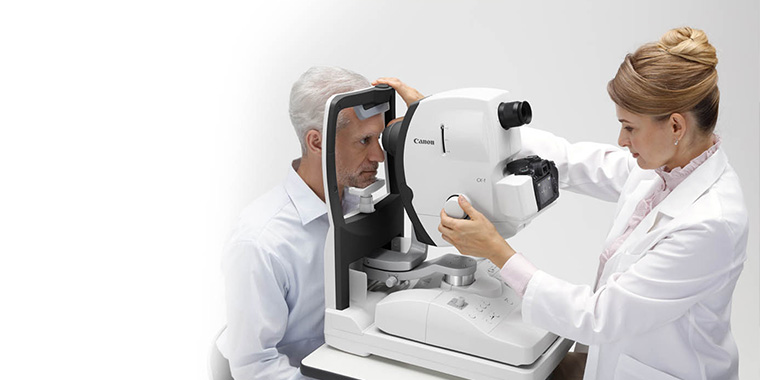Leading Cardiologist in Andalusia: Find Specialist Clinics Near You
Leading Cardiologist in Andalusia: Find Specialist Clinics Near You
Blog Article
The Advantages And Disadvantages of Different Refractive Surgical Procedures for Boosted Eyecare

LASIK Surgical Treatment
LASIK surgical procedure is a commonly performed refractive treatment that intends to correct vision issues such as astigmatism, nearsightedness, and farsightedness. During the treatment, a thin flap is created on the cornea, and a laser is used to reshape the underlying tissue, dealing with the refractive error.
One of the primary benefits of LASIK surgical procedure is the quick enhancement in vision experienced by several people. It is vital for people thinking about LASIK surgical procedure to undertake a thorough assessment by an eye care specialist to figure out if they are suitable candidates for the procedure.
PRK Procedure
The PRK procedure, likewise known as Photorefractive Keratectomy, is a type of refractive surgery that aims to deal with vision concerns comparable to LASIK surgical treatment. Unlike LASIK, which involves producing a flap in the cornea, PRK functions on the surface area layer of the cornea.
Among the benefits of PRK over LASIK is that it removes the threat of flap-related difficulties considering that no flap is developed throughout the surgery. This can be valuable for individuals with thin corneas or those associated with call sports where eye injury is a possibility. The recovery time for PRK is typically much longer contrasted to LASIK, as the external layer of the cornea needs time to regenerate after the procedure. Despite the longer recovery duration, PRK can be a suitable option for individuals seeking vision correction surgery.
SMILE Surgical Treatment
An innovative refractive surgical treatment method getting appeal in the area of ophthalmology is SMILE Surgery. Small Cut Lenticule Removal (SMILE) is a minimally intrusive treatment that fixes vision by improving the cornea utilizing a femtosecond laser. Unlike traditional LASIK surgical procedure, SMILE Surgical treatment involves producing a small cut in the cornea to extract a lenticule, which causes less disturbance to the corneal structure and possibly faster recuperation times.
One of the main benefits of SMILE Surgery is its capability to deal with nearsightedness (nearsightedness) and astigmatism with high precision, bring about excellent aesthetic end results for patients. The minimally invasive nature of the treatment also reduces the danger of complications such as completely dry eye disorder, making it a positive alternative for individuals seeking refractive surgical treatment.

LASEK Strategy
Having checked out the advantages and factors to consider of SMILE Surgical treatment, another noteworthy refractive surgical procedure strategy click over here worth analyzing is the LASEK Technique. LASEK, which represents Laser-Assisted Subepithelial Keratectomy, is a type of laser eye surgical procedure that intends to remedy refractive mistakes such as nearsightedness (nearsightedness), hyperopia (farsightedness), and astigmatism.
Unlike LASIK, LASEK does not include developing a corneal flap. Instead, throughout a LASEK treatment, the cosmetic surgeon utilizes a watered down alcohol solution to loosen up the thin external layer of the cornea, recognized as the epithelium.
One of the key advantages of LASEK is that it can be appropriate for people with slim corneas that may not be great prospects for LASIK. Furthermore, LASEK generally leads to marginal post-operative pain and a quicker healing time contrasted to PRK. Nonetheless, the aesthetic recovery process with LASEK might be a little longer than with LASIK.
Implantable Contact Lenses
Implantable Contact Lenses supply a lasting vision modification option for people seeking an option to conventional contact lenses or glasses. These lenses, likewise recognized as phakic intraocular lenses, are operatively put into the eye to correct refractive errors such as myopia (nearsightedness), hyperopia (farsightedness), and astigmatism. neurologist Andalusia. Unlike traditional get in touch with lenses that sit on look these up the surface of the eye, implantable contact lenses work within the eye itself, offering clear vision without the requirement for day-to-day maintenance or elimination
One of the key advantages of implantable contact lenses is their permanence. When placed, they can remain in the eye indefinitely, offering consistent and stable vision modification. Furthermore, these lenses can be an exceptional choice for people that are bad candidates for laser eye surgery or who favor a reversible vision improvement procedure.
Nevertheless, implantable get in touch with lenses do carry some threats, including the possibility for cataracts or enhanced eye stress. It is important for individuals considering this option to seek advice from an eye care professional to identify if implantable contact lenses are the appropriate selection for their certain requirements and eye health.
Verdict
To conclude, each kind of refractive surgical treatment has its very own benefits and downsides. LASIK surgical treatment is prominent for its fast healing time, while PRK procedure might be suitable for people with slim corneas. SMILE surgery uses minimal pain throughout the procedure, yet LASEK technique might have a longer healing process. Implantable contact lenses offer an alternative for those that are not my sources appropriate candidates for traditional surgical treatments. Patients need to seek advice from with their eye care provider to identify the best option for their specific demands.

In General, SMILE Surgical procedure presents a promising option for people looking to enhance their vision with refractive surgery.
Report this page